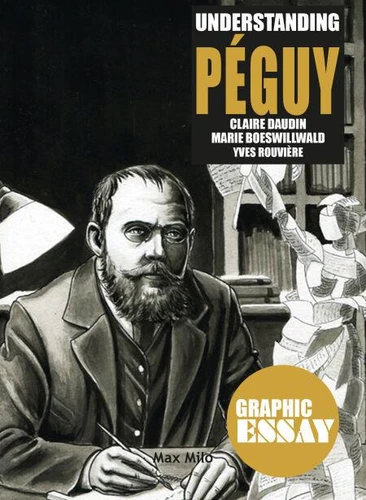Understanding Péguy
Par : , ,Formats :
Disponible dans votre compte client Decitre ou Furet du Nord dès validation de votre commande. Le format ePub protégé est :
- Compatible avec une lecture sur My Vivlio (smartphone, tablette, ordinateur)
- Compatible avec une lecture sur liseuses Vivlio
- Pour les liseuses autres que Vivlio, vous devez utiliser le logiciel Adobe Digital Edition. Non compatible avec la lecture sur les liseuses Kindle, Remarkable et Sony
- Non compatible avec un achat hors France métropolitaine
 , qui est-ce ?
, qui est-ce ?Notre partenaire de plateforme de lecture numérique où vous retrouverez l'ensemble de vos ebooks gratuitement
Pour en savoir plus sur nos ebooks, consultez notre aide en ligne ici
- Nombre de pages144
- FormatePub
- ISBN978-2-315-01459-0
- EAN9782315014590
- Date de parution10/02/2025
- Protection num.Adobe DRM
- Taille3 Mo
- Infos supplémentairesepub
- ÉditeurMax Milo
Résumé
For some, Péguy is "an anarchist who put holy water in his oil"; for others, a dangerous rebel whose "head is full of revolution". A socialist and a Catholic, a pious poet and a raging polemicist, Péguy turns out to be a man with a sometimes chaotic, always leaping journey.
Few authors have had such a controversial posterity as he. One hundred years after his death, it is time to do justice to this unclassifiable thinker, little known in his time, and who has so much to say in ours.
Yves Rouvière's drawings are there to give substance to the words, to "embody the spiritual", according to one of Péguy's cherished intuitions.
For some, Péguy is "an anarchist who put holy water in his oil"; for others, a dangerous rebel whose "head is full of revolution". A socialist and a Catholic, a pious poet and a raging polemicist, Péguy turns out to be a man with a sometimes chaotic, always leaping journey.
Few authors have had such a controversial posterity as he. One hundred years after his death, it is time to do justice to this unclassifiable thinker, little known in his time, and who has so much to say in ours.
Yves Rouvière's drawings are there to give substance to the words, to "embody the spiritual", according to one of Péguy's cherished intuitions.













